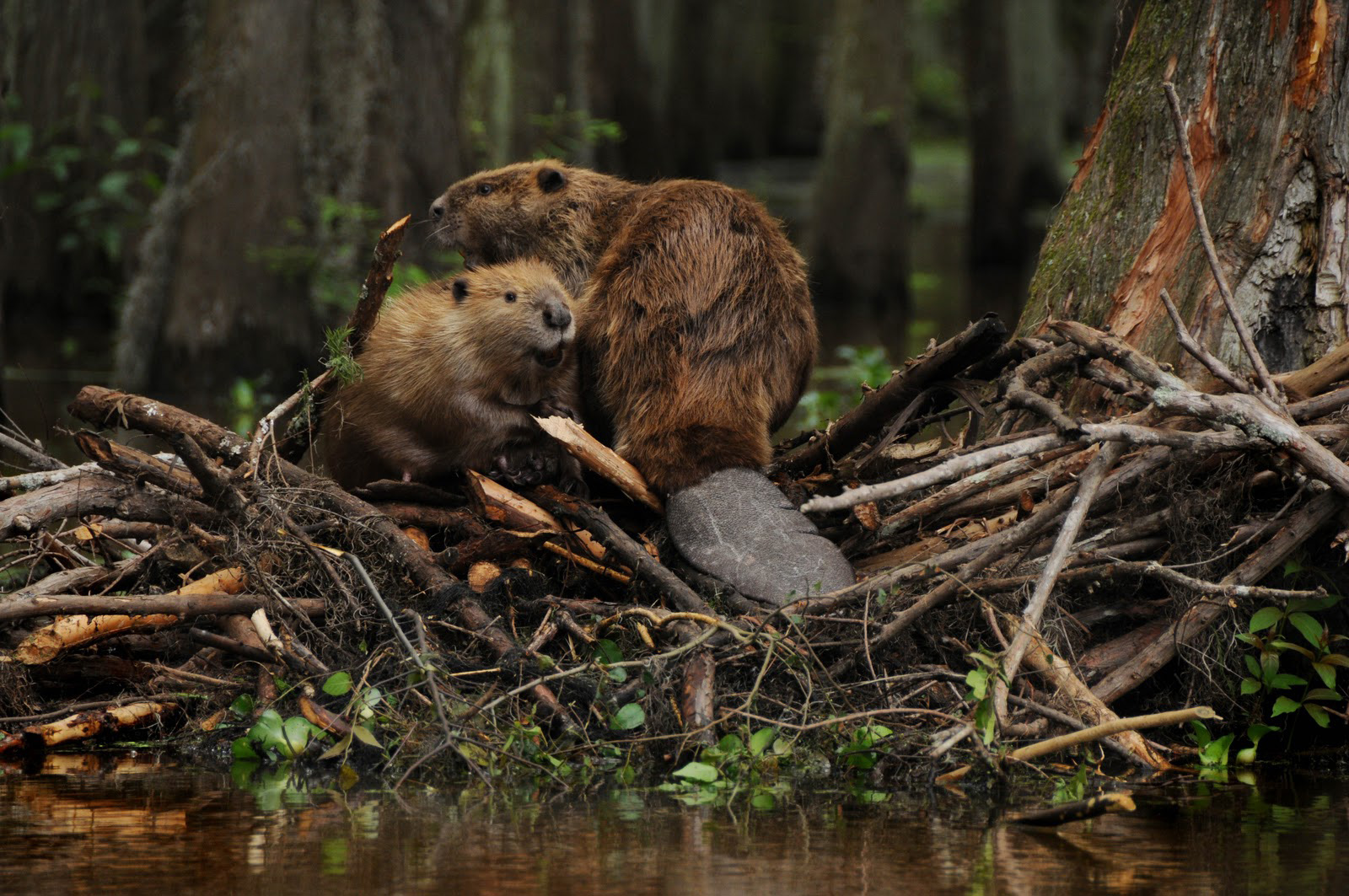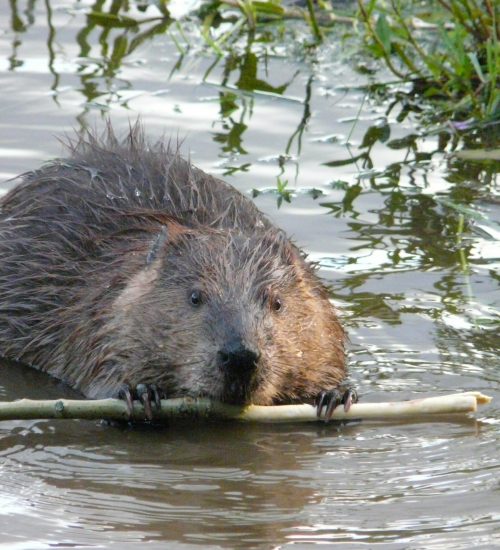ABOUT BEAVERS
Beavers are more than intriguing animals with flat tails and lustrous fur.
American Indians called the beaver the “sacred center” of the land because this species creates such rich, watery habitat for other mammals, fish, turtles, frogs, birds and ducks. We now know that beaver damming provides essential natural services for people too.
Beavers prefer to dam streams in shallow valleys, where the flooded area becomes productive wetlands.These cradles of life support biodiversity that rivals tropical rain forests. Almost half of endangered and threatened species in North America rely upon wetlands. Freshwater wetlands have been rated as the world’s most valuable land-based ecosystem.
Beavers reliably and economically maintain wetlands that sponge up floodwaters, alleviate droughts and floods (because their dams keep water on the land longer), lesson erosion, raise the water table and act as the “earth’s kidneys” to purify water. The latter occurs because several feet of silt collect upstream of older beaver dams, and toxics, such as pesticides, are broken down by microbes in the wetlands that beavers create. Thus, water downstream of dams is cleaner and requires less treatment for human use.

A Bit About Beavers
Beavers’ ability to change the landscape is second only to humans. That is just one reason why we find the flat-tailed species fascinating. While some beaver behavior is instinctive, they also learn by imitation and from experience. Dr. Donald Griffin, the father of animal cognition, has said, “When we think of the kinds of animal behavior that suggest conscious thinking, the beaver comes naturally to mind.”
Gentle Jokester
Wildlife rehabilitators find beavers to be gentle, reasoning beings who enjoy playing practical jokes. An Indian word for “beaver-like” also means “affable.” Adults may weigh over 40 pounds, and beavers mate for life during their third year. Both parents care for the kits (usually one to four) that are born in the spring. The youngsters normally stay with their parents for two years, and the yearlings become babysitters for the new litter. After weaning, their favorite foods include water lily tubers, apples and the leaves and green bark (cambium) from aspen and other fast-growing trees. Tree cutting is part of nature’s cycle, and beaver pruning stimulates willows, cottonwood and aspen to regrow bushier than ever the next spring. After eating, beavers use the peeled sticks to build a teepee-like lodge on the shore and/or a dam.
Protective Moat & Food Storage
By damming streams, beavers often raise the water level to surround their lodge with a protective moat, and create the deep water needed for winter food storage in northern climes. While other wildlife endure wintertime cold and hunger, beavers stay warm in their lodges with an underwater food cache of branches nearby. A beaver colony, can consist of six or more, including parents, yearlings and kits, yet they peacefully coexist in a lodge with underwater access to the iced-up pond for four months or more in the North.
ABOUT KITS

Natural Population Control
Beavers rarely overpopulate because they breed only once a year, defend large streamside territories from strangers, and the two-year-olds leave home each spring to find mates. They are limited to a small fraction of the landscape that is close to waterways. Kits have many predators including hawks, owls and otters. Bears, wolves, dogs and coyotes will also take older beavers that are especially vulnerable when seeking new territories. Accidents are another frequent cause of mortality, including falls into abandoned wells, and especially traffic accidents. Trapping is the most common source of mortality.
Lodge Occupancy
Beavers have fewer kits when occupancy reaches a certain level and food becomes scarce. In vast areas without trapping, beaver populations will peak, and then slowly drift down to a sustainable level. Removing beavers stimulates larger litters from survivors in the area as well as immigration by new beavers that are often younger and more active than the residents.
Extinction Threat
By the early 1900s, beavers were almost extirpated from North America, Europe and Asia due to trapping and the subsequent draining of lands for agriculture. Estimates of the current N. A. population are as low as five percent of those present prior to European settlement. When conflicts with humans arise, using modern methods can provide lasting solutions.
Want information about the European Beaver, Castor fiber, and how Scotland is reintroducing beavers?
The Scottish Wild Beaver Group is a charity that protects beavers living along the river Tay.
